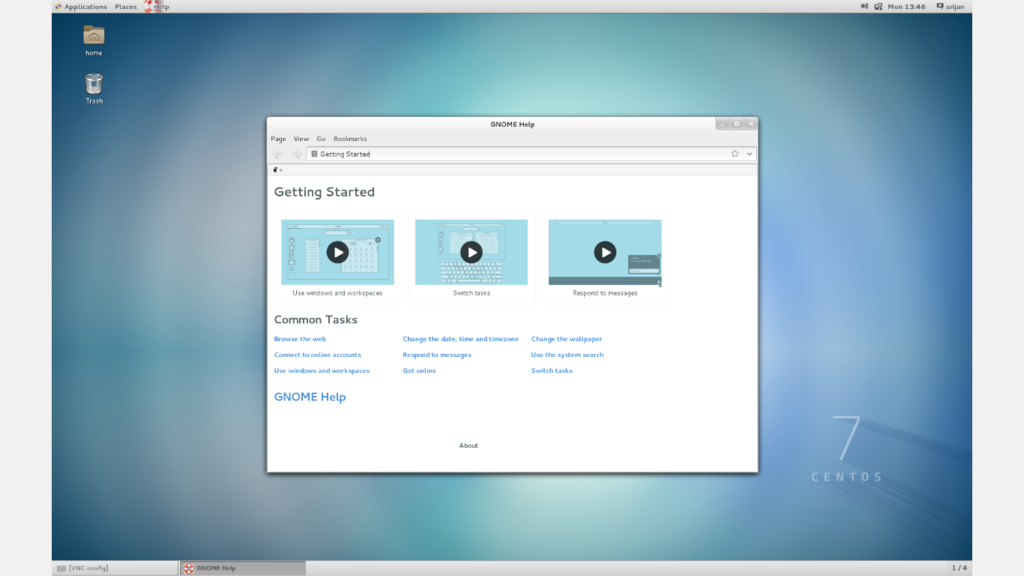

In order to securely access the CentOS from Windows or any other VNC viewer running system such as Android, Linux, or macOS set a VNC password. Restart Firewall: sudo firewall-cmd -reload 4. sudo firewall-cmd -add-service=vnc-server -permanent

For that, we have to whitelist its service in the default Firewalld of CentOS 8 permanently. To access the system remotely, the VNC service should be allowed to access, from the outside world. This also means no need to install any third-party repo, a single command will install and enable the VNC server on CentOS 8. Install TigerVNC server on CentOS 8Īs TigerVNC by default is available to create a VNCserver on the latest CentOS version, thus here we are installing the same. This command is not compulsory, however, just to make sure all the repos and their installed packages are up to date. However, those are on GUI one, can follow the steps given below to remotely access Linux. Well, if you are using the CLI server version of CentOS, then use SSH or Cockpit. Install VNC Server on CentOS 8 to access from Windows 10 remotely Install VNC Server on CentOS 8 to access from Windows 10 remotely.However, here we are using a fork of TightVNC Server i.e TigerVNC. The VNC source code is open source and so the various application built on the server-client model on it. However, unlike Windows, multiple clients can connect over it The graphical user interface is very friendly and looks similar to the software interface under Windows. Any computer with VNC-viewer can be easily connected to other systems in order to control it remotely, however, it should have VNC-Server installed. VNC’s server-side applications are very adaptable in UNIX and Linux operating systems. It is platform-independent, therefore available for Windows, Linux, macOS, Chrome, and Android. Just like by default Windows uses RDP protocol, VNC supports Remote Frame Buffer protocol (RFB) to access and control remote systems.

This graphical desktop sharing setup comes in two parts: Vnc server and Vnc-viewer (client). VNC stands for Virtual Network Computing (VNC), a system that used to remotely share and access the screen of computers. For example, open-source tight VNC server, and here will show how to use it on CentOS 8. On Linux, we have to install a third-party software manually to easily access them remotely. To access CentOS Linux from Windows 10 or 7 remotely is not like windows-to-windows via RDP.


 0 kommentar(er)
0 kommentar(er)
